These are some of the strangest and most intriguing tourist destinations in the whole globe, ranging from an abandoned Bolivian “train cemetery” to a closed Soviet submarine facility.
Abandoned buildings and locations may provide unique views into a location’s past, whether you find them to be creepy or beautiful (or both). These locations, which range from a deserted ghost town on Namibia’s Atlantic Coast to a disused art nouveau subway station under New York City, are not only strikingly beautiful but also serve as significant historical markers. Here are 15 deserted locations from across the world that you may actually visit.
1. SS Ayrfield Shipwreck – Sydney, Australia
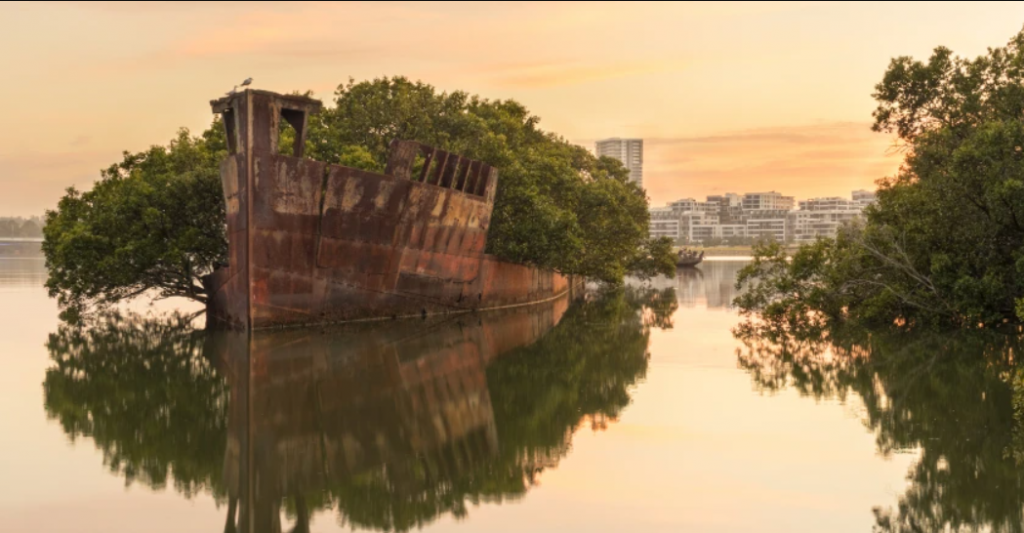
Homebush Bay in Sydney was used as an industrial port throughout the 20th century, and it was crowded with ships carrying coal and oil. But when industrial activity in the region dwindled near the turn of the century, the bay turned into a “ship-breaking ground” for retired ships. Some of the abandoned freighters from across Homebush Bay are still visible today, notably the 1911 ship SS Ayrfield, which supplied American troops in the Pacific theatre during World War II. The boat, which was deregistered in 1972, is currently floating in the water and is covered with mangroves.
2. Great Train Graveyard – Uyuni, Bolivia
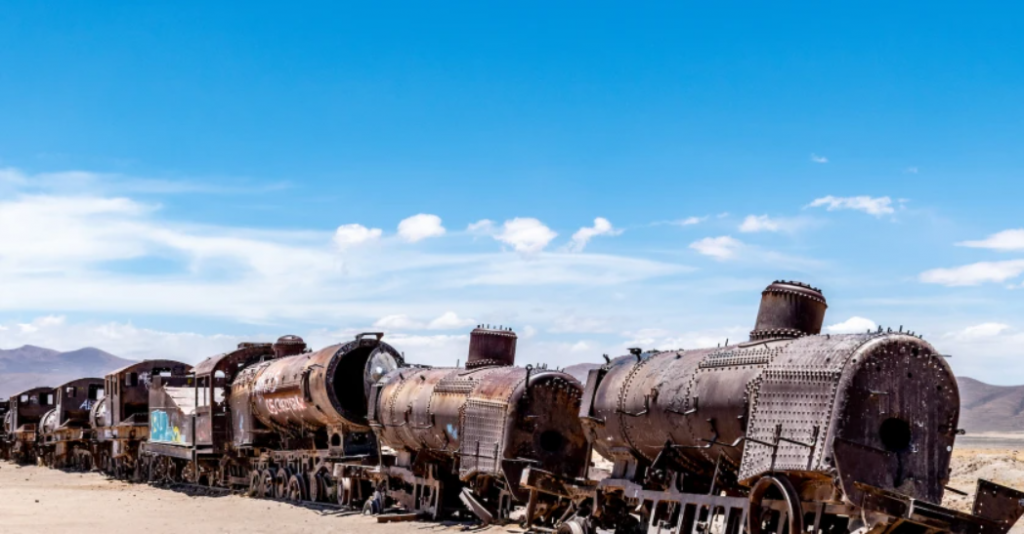
The little settlement of Uyuni, which lies high in southwest Bolivia’s Andean plains, is well-known for being close to Salar de Uyuni, the biggest salt flat on Earth. A “train graveyard,” or “cementerio de trenes” in Spanish, which is dotted with abandoned steam engines from the 19th century is another unusual sight in the region. As part of plans to build a railway system that would transport minerals from Uyuni to towns on the Pacific Coast, these enormous steel trains were introduced to the area. However, the project was abandoned, leaving more than 100 railway carriages to rust as the local mining sector lost pace. The grounds are less than 10 minutes by taxi from downtown Uyuni, and most local tour companies stop at the site en route to the salt flats, however, the trains have been mostly corroded by salt and strong winds. Visitors are welcome to inspect what is left of the trains.
3. Salina Turda Salt Mine – Turda, Romania
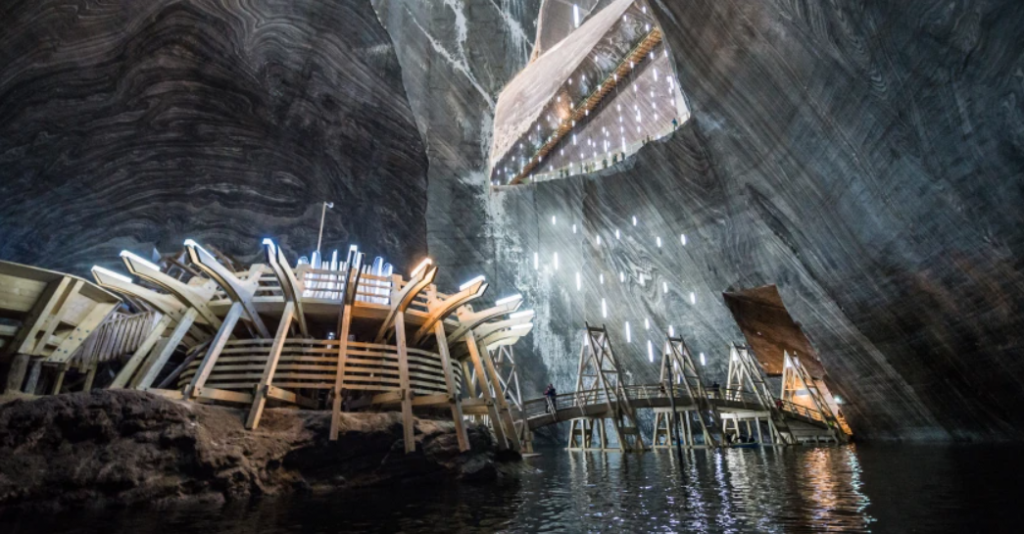
This enormous mine has been in operation since the Middle Ages. The hollowed-out underground chamber, which is in Transylvania, was the location of table salt manufacture for hundreds of years before excavations finally came to a halt in the early 20th century. Since 1932, the cavern has served a variety of functions, including serving as a bomb shelter during World War II and a storehouse for the storing of cheese. In 1992, Salina Turda underwent another transformation, becoming a salt mining museum as well as a subterranean entertainment park featuring an amphitheatre, a Ferris wheel, spa services, a bowling alley, pool tables, and even an underground lake with rowboats. (Ticket prices range from $5 for kids to $9 for adults.)
4. Rubjerg Knude Lighthouse – North Jutland, Denmark

Overlooking Denmark’s the North Sea from atop a soaring sand dune, the Rubjerg Knude Lighthouse is situated. The lighthouse was far from the Atlantic coast when it was first illuminated in 1900. But over time, erosion from the sea and wind altered the topography and transformed the region near the lighthouse into sand dunes. The Rubjerg Knude Lighthouse was deactivated in 1968, however from 1980 to 2002 it operated as a museum and coffee shop until being fully abandoned due to increasing sands. The building was at risk of tumbling into the ocean owing to erosion and shifting sands, therefore in October 2019, it was “rolled” to a new place more than 200 feet from the beach. The building is still free to observe from a beachfront stroll.
5. City Hall Subway Station – New York City
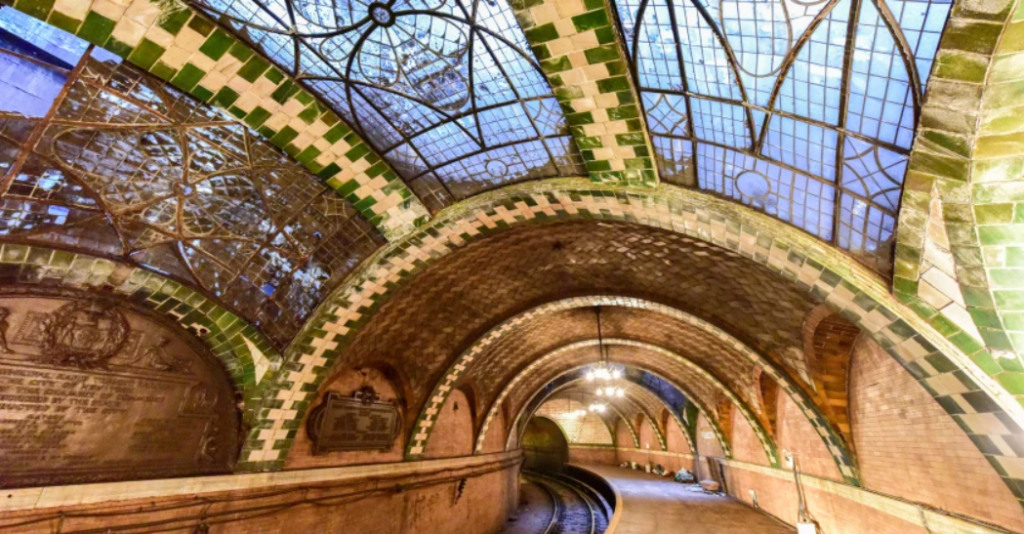
The first subway station in New York City, which debuted under City Hall in 1904, featured vaulted ceilings, elaborate tilework, and opulent chandeliers. The opulent platform was closed because the bulk of New Yorkers finally chose to utilize adjacent rail stations with faster express tracks. It serviced travellers until 1945. For $50 per person, the New York Transit Museum currently offers special guided tours of the long-gone City Hall station. For access to the New York landmark, you must join the museum, and even then, the 90-minute train station tour tickets frequently sell out.
6. Craco – Matera, Italy
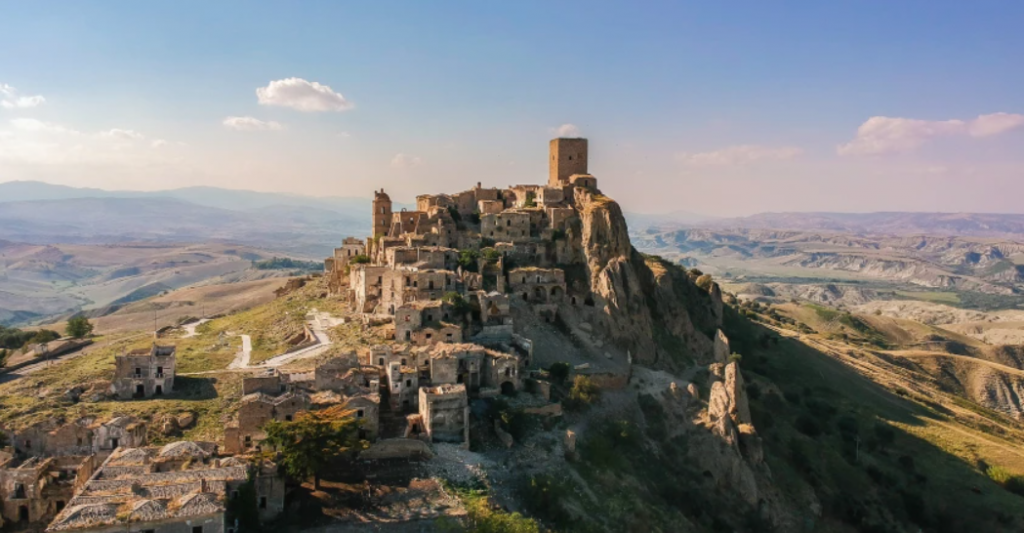
The medieval settlement of Craco, which was perilously built on a high hilltop in southern Italy around the eighth century, has suffered from several catastrophes, including earthquakes, landslides, and deadly diseases. All of Craco’s surviving people were forced to leave the area in 1991 due to a landslide, which left the area in a condition of progressive decay. Although the village is now completely deserted, tourists may still marvel at the abandoned community in the Basilicata area on daily excursions conducted by licensed guides for around $12; bookings are not required.
7. Deception Island – South Shetland Islands, Antarctica

In the South Shetland Islands of Antarctica, Deception Island is more than simply a landmass encircled by water—it’s an active volcano. The caldera was used as a base for whaling operations in the early 20th century, but it was frequently abandoned—first in 1931 because of a decline in the price of whale oil and again in 1969 because of disruptive volcanic eruptions. The Antarctic island is still littered with rusted tanks and boilers, along with dilapidated research facilities, beached vessels, and a cemetery dedicated to the employees who died there. Deception Island is accessible by cruises from companies like Silversea and Oceanwide Expeditions; if you’re lucky, you can get a glimpse of several chinstrap penguins during their breeding season.
8. Kolmanskop – Namib Desert, Namibia

Kolmanskop, a German diamond mining community, flourished in the early 1900s and is situated in the desolate Namib Desert. However, following World War I, the region’s once-rich diamond field started to dwindle, and business finally came to an end. German colonists abandoned the town entirely by the end of the 1950s, leaving their abandoned structures to be buried beneath the dunes of southern Namibia. Travellers must reserve a guided tour in Lüderitz, a neighbouring tourist hotspot on Namibia’s southern coast, to see what’s left of the sand-filled ghost town today.
9. Balaklava Bay Submarine Base – Balaklava, Crimean Peninsula

Some of the most lethal weapons from the Cold War were stored in this top-secret Soviet submarine facility. Joseph Stalin gave the go-ahead to build a secret facility known as Object 825 GTS beneath the city of Balaklava amid rising hostilities between the US and the Soviet Union. The site, which housed nuclear-armed submarines, continued to exist after the USSR’s collapse (the last submarine sailed out of the complex in 1996). The Balaklava Naval Museum Complex was built on the decommissioned installation in 2002 by the Ukrainian Ministry of Defense. On Wednesdays through Sundays, museum visitors can take guided excursions inside a part of the subterranean complex, experiencing a network of abandoned tunnels and an empty nuclear storage armoury. (From $2 for students and $4 for adults)
10. Hashima Island – Nagasaki, Japan
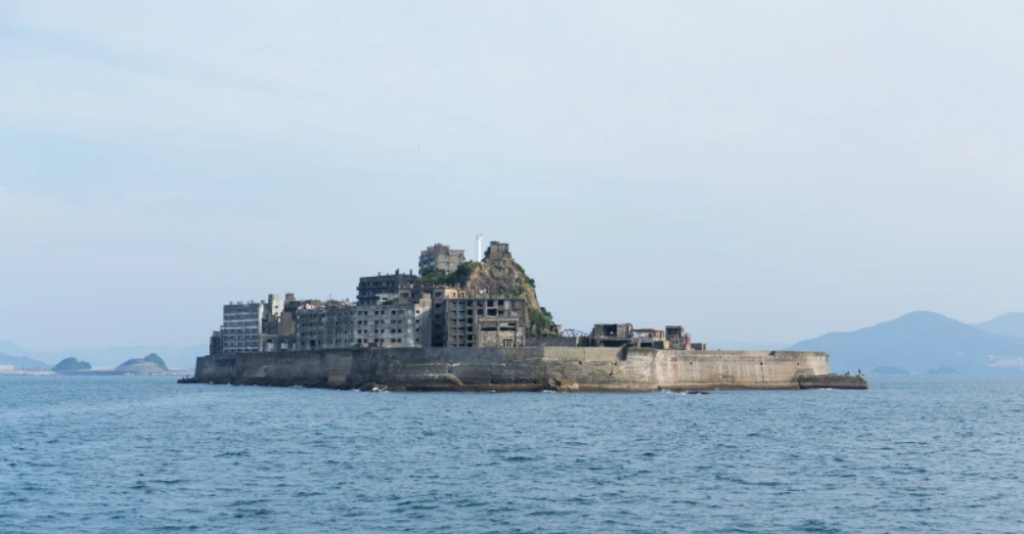
This 16-acre island in Japan’s Nagasaki prefecture, also known as Gunkanjima (literally Battleship Island, for its likeness to a Japanese battleship), was formerly a heavily inhabited area for underwater coal mining. From 1887 until the source of coal ran exhausted in 1974, Hashima Island operated as a profitable coal plant; nevertheless, the island’s people departed the area quite fast. After being named a UNESCO World Heritage site in 2015, the concrete “ghost island” is now accessible to tour groups through local businesses like The Gunkanjima Concierge Company. (Starting at $31 for students, $37 for adults)
11. Bodie State Historic Park – Mono County, California

Bodie had a thriving gold mining community with more than 10,000 residents in the late 1800s. The ghost town, which is now kept in a condition of “arrested decay,” is situated about 75 miles southeast of California’s Lake Tahoe. There are still more than 50 buildings, some of which have interiors that have been conserved and look virtually precisely as they did before. For an admission charge of $8 for adults and $5 for youngsters, the public can see a few of the abandoned structures (cash only). The State Historic Park conducts unique Ghost Mill Tours at night throughout the summer that include ghost stories and local mythology.
12. Tempelhof Airport – Berlin, Germany
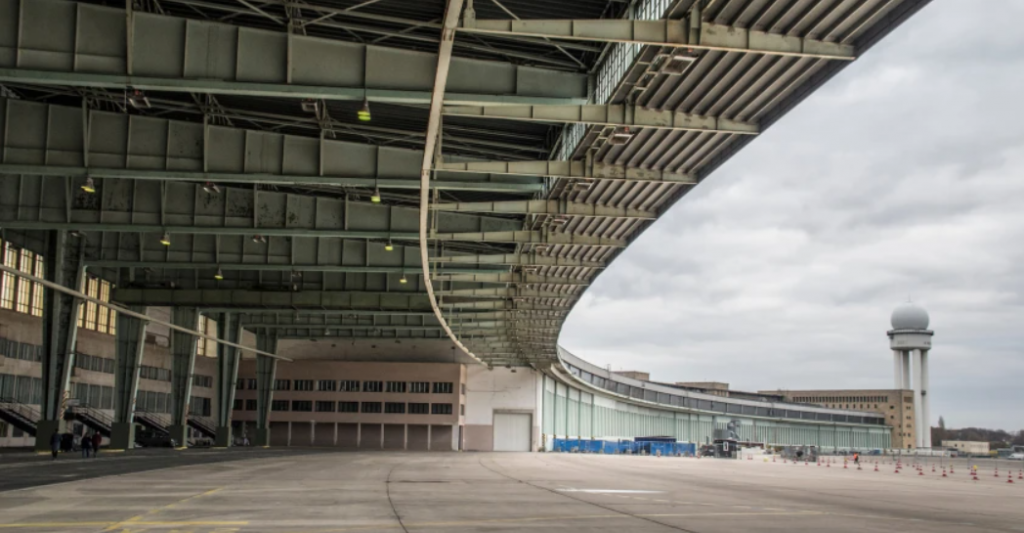
The vast Tempelhof Airport is one of several derelict structures in the city of Berlin that have convoluted pasts. This pre-World War II airport, which straddles the city’s Neukölln and Tempelhof areas, was originally one of the biggest buildings in Europe. After being closed in 2008, it stood vacant before being rebuilt as Berlin’s biggest public park in 2010. Former aviation runways are now utilized for bicycling, running, and skating, while open spaces with grass host community gatherings and urban gardening. It’s possible to roam around and take in the surreal Nazi terminal.
13. Bannerman Castle – Pollepel Island, New York

The Hudson River’s Pollepel Island is where Bannerman Castle is located, some 50 miles north of New York City. Francis Bannerman, a Scottish immigrant who worked as a military surplus items collector and required a warehouse to store his acquisitions, built the decaying building around the beginning of the 20th century. After Bannerman’s death in 1918, work on the castle came to an end. Since then, a number of unexplainable occurrences have taken place (including a shell powder explosion and a tragic boat accident). The Bannerman Castle Trust continues to work to preserve the location; from May to October, a variety of hard-hat walking tours are provided, and the words “Bannerman’s Island Arsenal” continue to be displayed on the castle’s side, making it visible to train passengers on the Metro-North Hudson line.
14. Kennecott Mill Town – Wrangell–St. Elias National Park and Preserve, Alaska
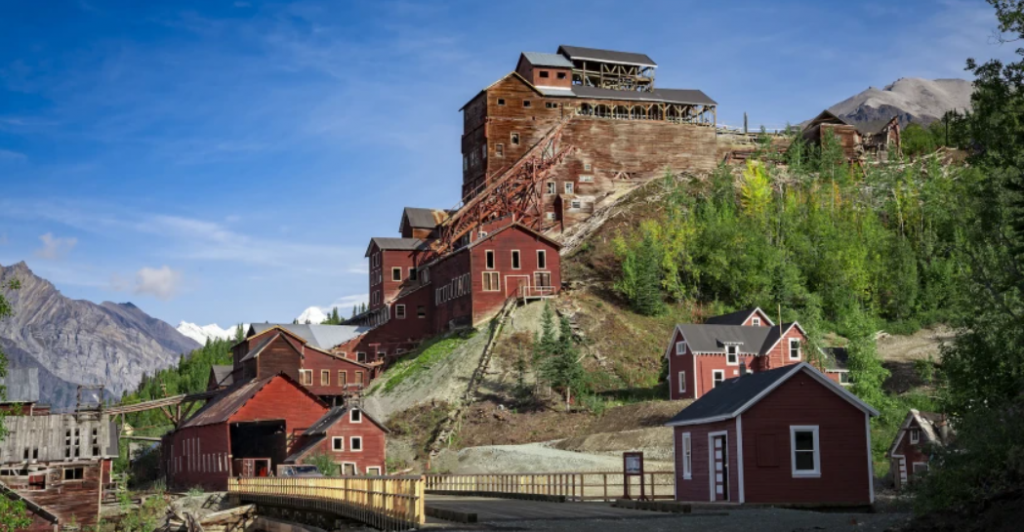
The National Register of Historic Places in the United States features this village with a copper mill from the 20th century. The processing of copper in Kennecott, a self-contained company community with a hospital, general shop, post office, and school, is estimated to have cost $200 million between 1911 and 1938. Two of the 2,800-acre ghost town’s most notable historical structures are a 14-story concentrating mill and a shuttered power plant, both of which can only be reached on a guided tour. Kennecott is inaccessible during Alaska’s harsh winters, thus the town’s tourist centre is only open from Memorial Day to Labor Day.
15. City Methodist Church – Gary, Indiana
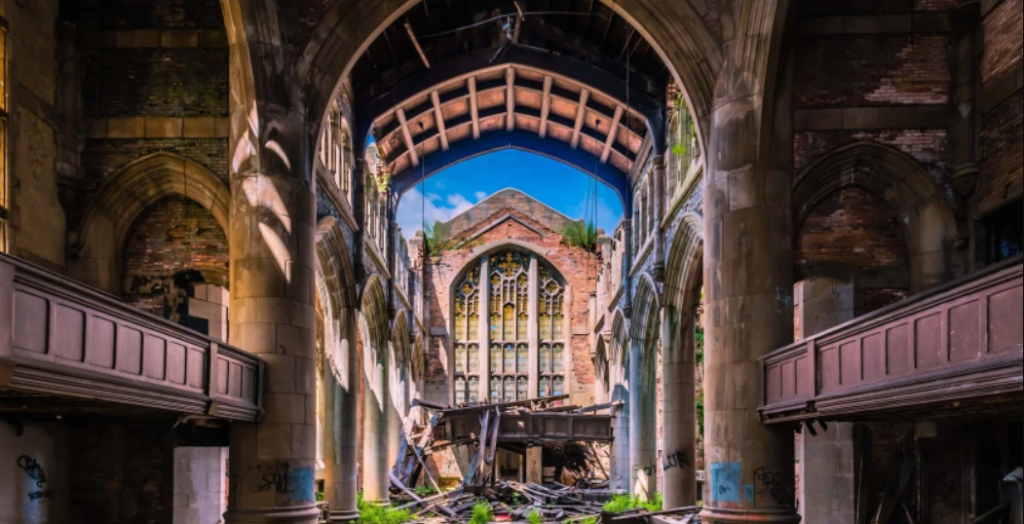
This Indiana church is a nine-story Gothic wonder with towering stone pillars and stained glass windows that was first constructed in 1926 with funding supplied by the U.S. Steel Corporation. Nearly 2,000 people were served by the City Methodist Church during its heyday, but when the state’s steel industry collapsed and Gary’s population decreased, the church closed its doors in 1975. Urban explorers and keen photographers have frequented the abandoned building for years (without permission), but in 2017, the Gary Redevelopment Commission started planning to transform the dilapidated church into a “ruins garden,” equipped with an amphitheatre for public events. (afar)
Find out more by engaging Buzzer.lk and Buzzer Travel.




